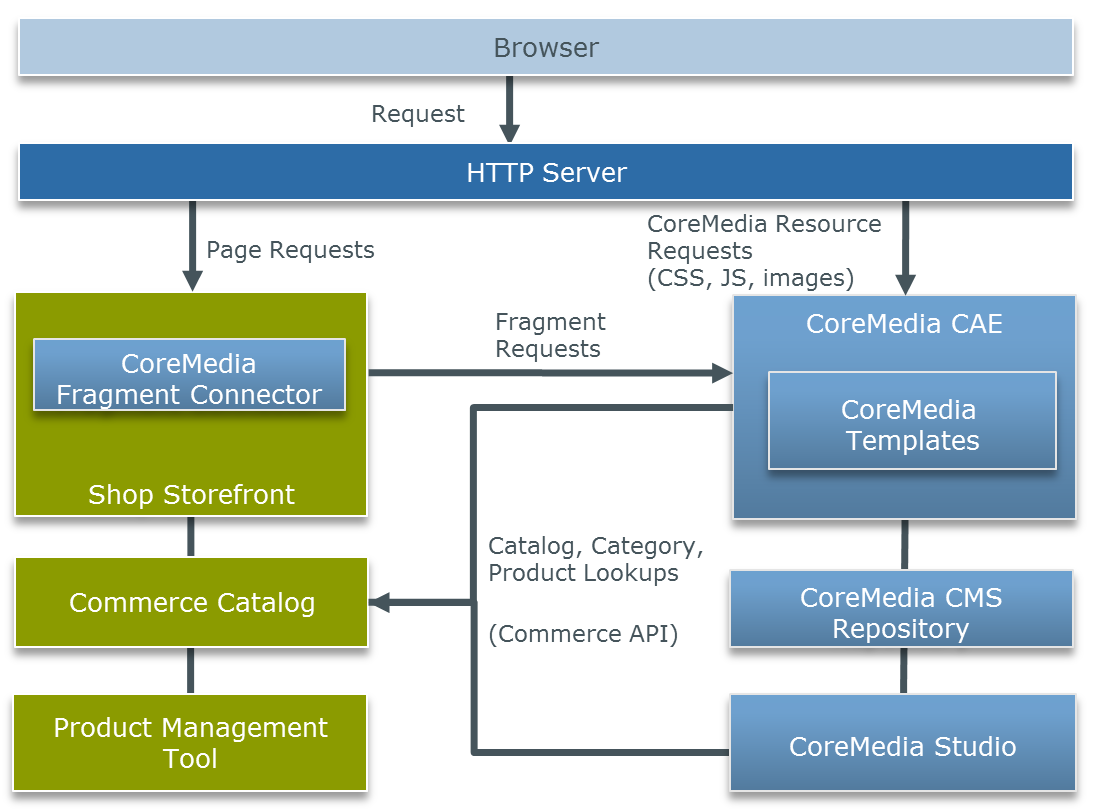Connector for HCL Commerce Manual / Version 2107
Table Of ContentsFigure 8.1, “Commerce-led Architecture Overview” shows the commerce-led integration scenario where the CoreMedia CAE operates behind the commerce server for all page request. Moreover, you can see two kinds of requests. While the left side shows HTTP page requests to the commerce server, that include fragments delivered by the CAE, the right side shows resource or Ajax requests directly redirected by the one virtual host in front of both servers to the CAE.
A typical flow of requests through a commerce-led system is as follows:
A user requests a product detail page that is received by the virtual host.
The virtual host identifies the request as a commerce request and forwards it to the commerce server.
Part of the requested Product Detail Page (PDP) is a CMS content fragment. Hence, the commerce system requests the fragment from the CAE.
The resulting HTML page flows back to the user's browsers. Because the page contains dynamic CAE fragments which have to be fetched via Ajax, the browser triggers the corresponding request against the virtual host.
As this is a CAE request, the virtual host forwards it directly to the CAE.
From the point of view of the user all requests are sent to exactly one system, represented by the one virtual host that forwards the requests accordingly. That leads to the same-origin policy problem. Solutions for this are presented in section Section 8.4, “Solutions for the Same-Origin Policy Problem”.




